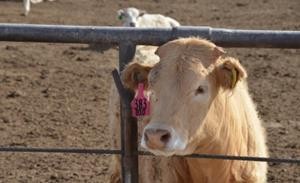Escherichia coli O157:H7 is a foodborne pathogen that causes illness in humans worldwide. Cattle are the primary reservoir of this bacterium, with the concentration and frequency of E. coli O157:H7 shedding varying greatly among individuals.
 The term “super-shedder” has been applied to cattle that shed concentrations of E. coli O157:H7≥104 colony-forming units/g feces. Super-shedders have been reported to have a substantial impact on the prevalence and transmission of E. coli O157:H7 in the environment. The specific factors responsible for super-shedding are unknown, but are presumably mediated by characteristics of the bacterium, animal host, and environment.
The term “super-shedder” has been applied to cattle that shed concentrations of E. coli O157:H7≥104 colony-forming units/g feces. Super-shedders have been reported to have a substantial impact on the prevalence and transmission of E. coli O157:H7 in the environment. The specific factors responsible for super-shedding are unknown, but are presumably mediated by characteristics of the bacterium, animal host, and environment.
Super-shedding is sporadic and inconsistent, suggesting that biofilms of E. coli O157:H7 colonizing the intestinal epithelium in cattle are intermittently released into feces. Phenotypic and genotypic differences have been noted in E. coli O157:H7 recovered from super-shedders as compared to low-shedding cattle, including differences in phage type (PT21/28), carbon utilization, degree of clonal relatedness, tir polymorphisms, and differences in the presence of stx2a and stx2c, as well as antiterminator Q gene alleles. There is also some evidence to support that the native fecal microbiome is distinct between super-shedders and low-shedders and that low-shedders have higher levels of lytic phage within feces.
Consequently, conditions within the host may determine whether E. coli O157:H7 can proliferate sufficiently for the host to obtain super-shedding status. Targeting super-shedders for mitigation of E. coli O157:H7 has been proposed as a means of reducing the incidence and spread of this pathogen to the environment. If super-shedders could be easily identified, strategies such as bacteriophage therapy, probiotics, vaccination, or dietary inclusion of plant secondary compounds could be specifically targeted at this subpopulation.
Evidence that super-shedder isolates share a commonality with isolates linked to human illness makes it imperative that the etiology of this phenomenon be characterized.
Foodborne Pathogens and Disease. February 2015, 12(2): 89-103
Munns Krysty D., Selinger L. Brent, Stanford Kim, Guan Leluo, Callaway Todd R., and McAllister Tim A.
